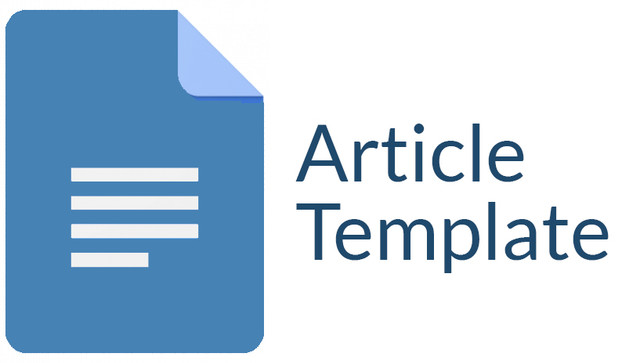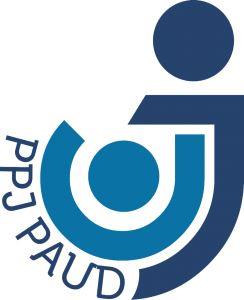Pengembangan Media Puzzle Alfabet Untuk Stimulasi Kemampuan Membaca Permulaan Pada Anak Usia Dini di TK Kartini I Tumenggungan Lamongan
DOI:
https://doi.org/10.30736/jce.v8i1.2134Keywords:
Puzzle Alfabet, Kemampuan Membaca Permulaan, Anak Usia DiniAbstract
Penelitian ini dilatarbelakangi oleh kurangnya media menarik dan inovatif untuk menstimulasi kemampuan membaca permulaan di TK Kartini I Tumenggungan Lamongan. Tujuan dari penelitian ini adalah mengetahui hasil pengembangan media puzzle huruf alfabet dalam meningkatkan kemampuan membaca permulaan pada anak usia 4-5 tahun. Penelitian ini merupakan penelitian pengembangan (Research And Development ) dengan menggunakan metode Borg & Gall yang dimodifikasi menjadi enam tahap, meliputi a) Studi pendahuluan, b) Perencanaan, c) Desain produk, d) Uji coba & Validasi Produk, e) Revisi Produk, f) Uji coba Lapangan. Jenis Data yang diperoleh dalam penelitian ini merupakan data kualitatif dan kuantitatif. Data kualitatif didapatkan dari hasil komentar serta saran dan wawancara para validator ahli, sedangkan data kuantitatif yang diperoleh dari hasil angket/kuesioner penilaian subyek pada uji coba lapangan, yakni siswa-siswi TK Kartini Tumenggungan Lamongan. Hasil validasi ahli dan uji coba menunjukan bahwa ahli materi memberikan nilai persentase skor 83,33%. Hal ini menunjukkan bahwa hasil validasi dan perbaikan produk dinyatakan valid dan tidak perlu revisi. Kemudian validasi dari ahli media menunjukkan nilai persentase 88,5%, yang berarti media produk ini dinilai valid dan tidak perlu revisi. Sedangkan berdasarkan penilaian validasi ahli praktisi nilai persentase 93,3%, yang menunjukkan bahwa media/produk valid, dapat dilanjutkan pada tahap uji coba lapangan. Pada tahap uji coba produk pada subyek (siswa TK) terbagi menjadi dua, yakni 1) uji coba perseorangan yang memperoleh nilai persentase 94,11%, 2) uji coba kelompok kecil memperoleh nilai persentase 80,16%, dan sedangkan pada tahap uji coba lapangan diperoleh nilai persentase 72,82%. Berdasarkan hasil tersebut dapat dinyatakan bahwa produk/media layak digunakan dalam kegiatan pembelajaran untuk stimulasi kemampuan membaca permulaan pada anak usia dini (4-5 tahun).
References
Arsyad, Azhar. (2017). “Media Pembelajaran “ Jakarta Rajawali Pers
Astuti, Retno Dwi. (2020). Metode Pembelajaran Anak Usia Dini Kreatif & (Astuti, 2020)Inovatif. Lamongan: CV Pustaka Djati.
Masnipal, Arif Hakim. (2018). “ Perbedaan Pendapat Pembelajaran Prabaca, Pratulis dan Prahitung Bagi Anak Usia Dini” Golden Age: Jurnal Pendidikan Anak Usia Dini, Vol.2 (1). 3-6.
Osei, A., dkk. (2016). The Use Of Prereading Activities In Reading Skills Achievement In Preschool Education. European of Educational Research, 5 (1), 3542. 188
Permendikbud 137-2014, Standart Nasional Pendidikan Anak Usia Dini. diakses pada 05 Desember 2019. https://kupdf.net/download/sttpa-paudpdf_5c209212e2b6f568590ed0b_pdf
Sugiyono. (2016). Metode Penelitian Kuantitatif Kualitatif dan R&D. Bandung: Alfabeta
Tedjasaputra, Mayke. S. (2001). Bermain, Mainan dan Permainan untuk Pendidikan Anak Usia Dini. Jakarta: Grasindo
Zaman, Badruz., & Cucu Eliyawati. (2010). “Media Pembelajaran Anak Usia Dini” Universitas Pendidikan Indonesia.
Downloads
Published
How to Cite
Issue
Section
License
Copyright (c) 2024 Elif Rofiatin, Diana Dwi Jayanti

This work is licensed under a Creative Commons Attribution-ShareAlike 4.0 International License.
Please find the rights and licenses in JCE (Journal of Childhood Education). By submitting the article/manuscript of the article, the author(s) agree with this policy. No specific document sign-off is required.
1. License
Use of articles will be governed by the Creative Commons Attribution - ShareAlike license as currently displayed on Creative Commons Attribution-ShareAlike 4.0 International License.
2. Author(s)' Warranties
The author warrants that the article is original, written by stated author(s), has not been published before, contains no unlawful statements, does not infringe the rights of others, is subject to copyright that is vested exclusively in the author and free of any third party rights, and that any necessary written permissions to quote from other sources have been obtained by the author(s).
3. User Rights
JCE (Journal of Childhood Education)'s spirit is to disseminate articles published are as free as possible but there is a little payment for publication. Under the Creative Commons license, JCE (Journal of Childhood Education) permits users to copy, distribute, display, and perform the work for commercial purposes. Users will also need to attribute authors and JCE (Journal of Childhood Education) on distributing works in the journal and other media of publications.
4. Co-Authorship
If the article was jointly prepared by more than one author, any authors submitting the manuscript warrants that he/she has been authorized by all co-authors to be agreed on this copyright and license notice (agreement) on their behalf, and agrees to inform his/her co-authors of the terms of this policy. JCE (Journal of Childhood Education) will not be held liable for anything that may arise due to the author(s) internal dispute. JCE (Journal of Childhood Education) will only communicate with the corresponding author.
5. Miscellaneous
JCE (Journal of Childhood Education) will publish the article (or have it published) in the journal if the article’s editorial process is successfully completed. JCE (Journal of Childhood Education)'s editors may modify the article to a style of punctuation, spelling, capitalization, referencing and usage that deems appropriate. The author acknowledges that the article may be published so that it will be publicly accessible and such access will be free of charge for the readers as mentioned in point 3.
JCE (Journal of Childhood Education) by Universitas Islam Lamongan is licensed under a Creative Commons Attribution-ShareAlike 4.0 International License.Based on a work at http://journalfai.unisla.ac.id/index.php/jce.












